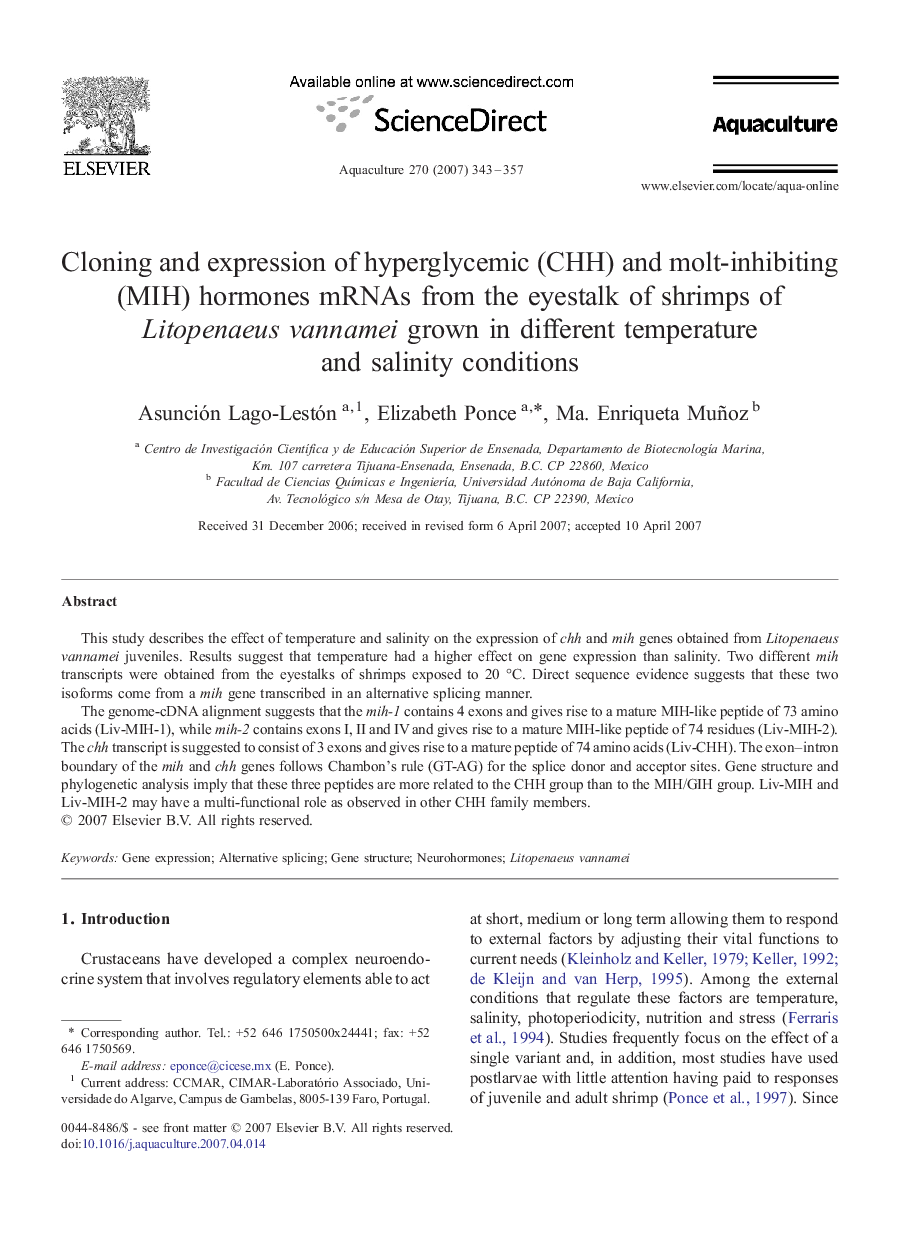| Article ID | Journal | Published Year | Pages | File Type |
|---|---|---|---|---|
| 2425058 | Aquaculture | 2007 | 15 Pages |
This study describes the effect of temperature and salinity on the expression of chh and mih genes obtained from Litopenaeus vannamei juveniles. Results suggest that temperature had a higher effect on gene expression than salinity. Two different mih transcripts were obtained from the eyestalks of shrimps exposed to 20 °C. Direct sequence evidence suggests that these two isoforms come from a mih gene transcribed in an alternative splicing manner.The genome-cDNA alignment suggests that the mih-1 contains 4 exons and gives rise to a mature MIH-like peptide of 73 amino acids (Liv-MIH-1), while mih-2 contains exons I, II and IV and gives rise to a mature MIH-like peptide of 74 residues (Liv-MIH-2). The chh transcript is suggested to consist of 3 exons and gives rise to a mature peptide of 74 amino acids (Liv-CHH). The exon–intron boundary of the mih and chh genes follows Chambon's rule (GT-AG) for the splice donor and acceptor sites. Gene structure and phylogenetic analysis imply that these three peptides are more related to the CHH group than to the MIH/GIH group. Liv-MIH and Liv-MIH-2 may have a multi-functional role as observed in other CHH family members.
